Jump to:
The New Year is the perfect time to start fresh in the garden. Setting intentions during this period helps you stay productive and get ahead with early sowing. Even better, you can enjoy a flourishing garden that provides a year-round harvest, especially when done right.
Let’s see how to make your garden shine this January and beyond with tips that work.
Here’s What You Should Focus On in New Year Gardening
Gardening in January is often the coldest month—although it’s not ideal for outdoor planting, there’s still plenty to work on. The days are getting longer, making it a great opportunity to prepare your garden for spring instead.
It’s common to still have fallen leaves on the ground, especially if you didn’t get the chance to clear them before winter set in. Wet conditions are another factor, with chances of waterlogged soil, weed growth, and pest issues. Not to mention the dead plants that unfortunately didn’t survive the cold weather. Pruning deciduous trees and shrubs is also best done during this month.
So, this January, we want you to focus on preparing your green space for the upcoming growing seasons by taking these steps.
Clear the fallen leaves

Fallen leaves are easy to manage, but wet, decomposing leaves are a different concern. You won’t want them to stay around too long, so it’s best to collect them as early in January as possible. Get your trusty garden rake, ideally, a leaf rake, to gather up all those wet and stuck leaves without damaging your lawn or soil.
It’s a good idea to gather the leaves in small sections rather than trying to clear everything in one go. Alternatively, if you’ve got a leaf blower, you can use that, but be gentle with it. You don’t want to blow the leaves all over the place!
Tip: Once you’ve collected all those leaves, compost them in a separate leafmould heap to improve your soil, planting, and mulching.
It might not be the most fun job, but clearing those leaves now will help your garden breathe better. What’s more, it makes your garden look tidier, reduces the risk of damaging the underlying plants and grass, and helps protect your garden’s biodiversity by preventing overwintering bugs and beasties from using the piled leaves as their home.
Fix waterlogged soil
Cold temperatures make the soil colder, and it can even freeze, which slows down the absorption of water. As a result, rain sits on the surface longer rather than soaking into the ground, leading to waterlogged soil. Dealing with this can be a bit tricky, but here’s how you can tackle it.
First things first, don’t walk on it. Doing so can cause compaction, which makes it even harder for the soil to drain properly. If possible, wait for a few dry days before tackling any heavy gardening tasks like digging or turning the soil. Working on wet soil can damage its structure, making it harder for plants to grow later on.
If this is a regular problem, now’s a good time to think about drainage solutions. Sprinkle organic matter like compost or well-rotted manure to improve the structure and soil drainage over time. You could also consider creating raised beds for planting. Raised beds improve drainage by allowing excess water to flow away from plant roots, giving your plants a better chance in the spring.
Cover the soil with a garden tarp, landscape fabric, or mulch to prevent further waterlogging. This way, you create a barrier that protects the soil from continuous exposure to rain. This technique also encourages soil aeration and allows your soil to breathe.
Overall, your soil will be more manageable and ready for cultivation once the weather warms up, giving you a jump on the growing season.
Pull up weeds

Some weeds can continue to grow in mild winter weather, or their seeds may lie dormant and start sprouting as temperatures rise. Don’t leave any living weeds around, as they’ll just come back and compete with your plants.
When pulling weeds, grab them as close to the ground as you can and pull them straight up to make sure the roots come out, too. If the roots don’t come up, cut off the tops to stop them from going to seed.
If there are too many weeds to pull by hand, using the right tool does the trick. A claw tool is perfect for small weeds because it helps pull them out with the roots. A garden hoe is a good choice for bigger areas; it lets you clear them up quickly and easily.
Tip: Gather all the weeds you’ve pulled, along with any compostable materials, and put them in a compost pile. You can make one using this composting guide. The heat will kill the weeds before any seeds can germinate.
If these weeds are overlooked, they can compete with your plants for water, nutrients, and light. Clearing them out gives your garden the best chance of thriving in the upcoming seasons and preventing them from spreading and taking over later on.
Deal with garden pests
Even when it’s cold and wet outside, pests can still be hiding in fallen leaves or around your plants. Keep an eye out for aphids or slugs; if you spot any, remove them by hand (with a glove on) or use soapy water to spray them off. Just make sure it’s not too cold when you do it, so your plants don’t end up freezing. Treatments like horticultural oils or insecticidal soaps can help, but for now, we recommend sticking with non-invasive methods.
Take out any withered or damaged plants
This is a great task to do in January to tidy up your garden and make room for healthy growth in the seasons ahead. A plant that is brown, mushy, or brittle is likely beyond saving—but if there’s any green left, give it a chance to recover.
For perennials or shrubs that haven’t fully died but have some damage, trim back the dead stems, leaves, and branches. This will help the plant focus on new growth in spring. For plants that are completely dead, pull them out by the roots.
Once everything is cleared, take a look at your soil. Is it compacted from the cold or heavy rainfall? If so, loosen it up gently and add organic matter like compost to nourish it. Finally, add a layer of mulch to shield the soil from cold, suppress weeds, and retain moisture for the warmer months.
When removing dead plants, make sure your tools are sharp and clean to avoid spreading any diseases. You can sterilise your pruners or shears with rubbing alcohol or a bleach solution.
Tip: Don’t leave dead plants lying around in the garden, as they can attract pests or harbour diseases. Add them to a compost pile (if they haven’t gone to seed), or dispose of them if they’re diseased to stop any illnesses from spreading.
Prune trees, shrubs, and hedges

Winter pruning doesn’t encourage new growth, so it’s less stressful for trees, shrubs, and hedges. Plus, it’s easier to see what you’re doing when the branches are bare. Exceptions include evergreens and tender plants (better left until spring), as well as Prunus species (like ornamental cherries, plums, and almonds).
For Wisteria, cut back the side shoots from summer pruning to two or three buds, being careful not to remove any flower buds. If your trees are too large to prune on your own, it might be time to call in a tree surgeon.
Tips: Tie wall shrubs and climbers to their supports to protect them from wind damage. Ornamental vines, ivy, Virginia creeper, and Boston ivy can be trimmed back now.
Prepare for frost
Don’t rule out frost just yet! January might feel like the start of the year, but it can still catch you by surprise. Keep row covers on hand so you can use them whenever needed. Store them somewhere dry, like a garden shed or an outdoor storage box. When the time comes, position the covers and hold them down with stones or bricks.
Clear bottles cut in half work wonders for winter plants or crops as protection against the cold. This simple solution can fit over individual small plants, either outside or as an extra layer of warmth inside the greenhouse. If you’re feeling a bit DIY, a hoop house made from clear plastic, PVC water pipe, and rebar can create a functional temporary tunnel. It’s easy to set up: secure the rebar lengths into the ground and connect them at the top with a central ridge of piping. It’s perfect for keeping winter-hardy salads and vegetables safe from frost.
When it comes to your root crops, it’s best to lay a mulch of compost, straw, dried leaves, or leaf mould about six inches (15cm) thick. If the ground is likely to freeze solid for weeks on end, dig up your root crops, pop them in pots temporarily, and store them somewhere dry and well-ventilated—like a shed, garage, or similar spot.
You’ll also want to take the opportunity to bring your patio furniture inside. Frost can cause the fibres of natural rattan garden furniture to weaken and crack. Wooden garden furniture can also absorb moisture, which may lead to swelling, cracking, or warping. If storing isn’t an option, a breathable furniture cover will do. For timber pieces, apply wood oil or sealant before the winter months for extra protection. When spring comes, they’ll be good to go again!
Round-up
Give your garden a refresh this January, starting with clearing any fallen leaves you might have missed before winter. Next, tackle waterlogged soil and pull up the weeds, as well as withered and damaged plants. Keep an eye on garden pests, prune trees, shrubs, and hedges, and get ready for any frost.
More winter and spring prep tips: How to Clear Snow from Your Driveway and Garden
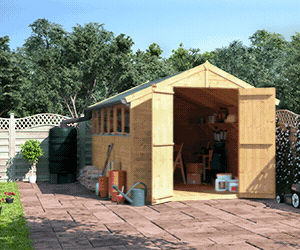




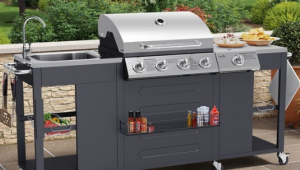


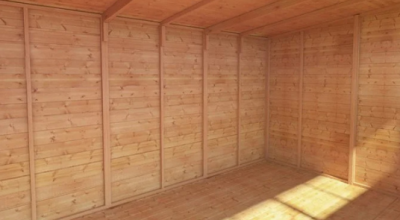
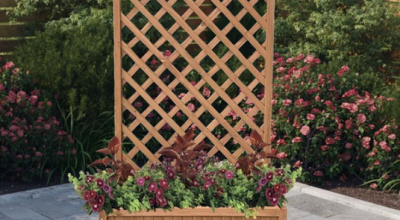

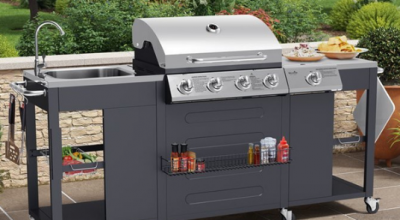

What do you think ?